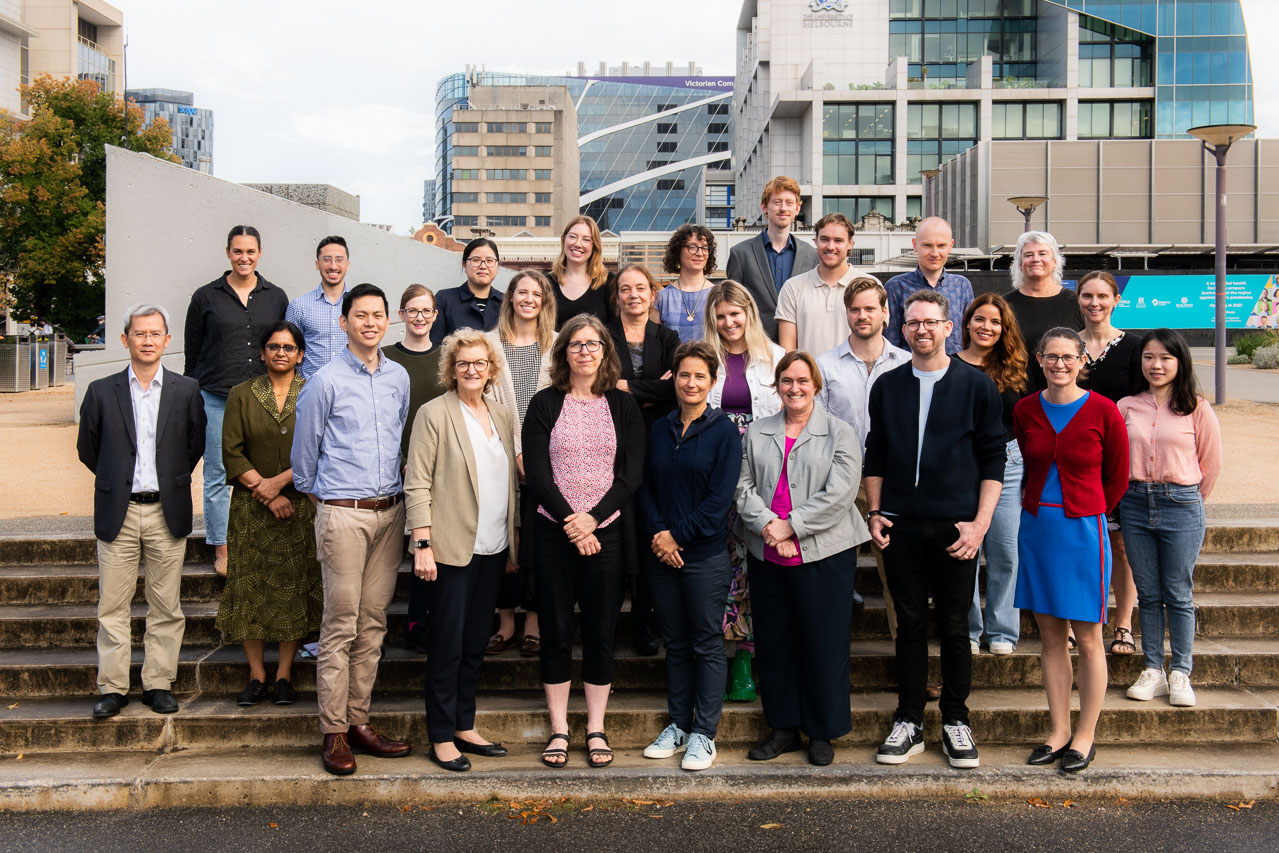This website uses cookies so that we can provide you with the best user experience possible. Cookie information is stored in your browser and performs functions such as recognising you when you return to our website and helping our team to understand which sections of the website you find most interesting and useful.
News
Tackling AMD from all angles
CERA, the University of Melbourne and WEHI are on a mission to unlock the secrets of a high-risk form of age-related macular degeneration.
Understanding a disease like age-related macular degeneration (AMD), which is influenced by so many different factors, is a huge challenge that requires a lot of different skills to investigate.
At the halfway point of the five-year Synergy Project, teams from CERA, the University of Melbourne and WEHI have progressed towards their shared goal of unlocking the secrets of a high-risk form of AMD.
Almost 30 members of the team met in Melbourne to share their progress, which started during the COVID pandemic.
“This meeting is the first time we have all been able to all get together in the same room to work together and share our progress,” says Dr Carla Abbott, Senior Research Fellow at CERA and project manager of the study.
“It is world-first work that we’re all now sharing.”

High-risk AMD
In the earliest stages of AMD, most people do not notice any significant change to their vision.
However, as the disease progresses to later stages, vision is threatened by degeneration of the cells in the macula.
While treatments for late-stage “wet” type of AMD have transformed patient’s lives, there is no treatment for preventing the disease from progressing to its later stages and no treatment in Australia yet for the “dry” type of late-stage AMD.
But with new imaging techniques it has been possible to spot a particular deposit, known as reticular pseudodrusen (RPD), that is associated with an increased risk of progressing to later stage AMD and vision loss.
Understanding the underlying genetics and other features of reticular pseudodrusen might point towards new treatments for AMD.
Types of research
The Synergy team covers a remarkably wide array of skills and disciplines, ranging from optometrists and stem-cell scientists to histologists and geneticists, and all are working together to investigate AMD from different perspectives.
At CERA, Professor Robyn Guymer AM and Associate Professor Zhichao Wu are the Principal investigators working to define reticular pseudodrusen in detail – so it can be properly spotted in the clinic – and find the forces that impact the diseases’ progress.
“We are collecting a lot of data from the many people who come to CERA with AMD and comparing those with RPD to those without,” says Dr Abbott.
“From blood and skin samples to detailed images of RPD that we’re able to capture with state-of-the-art imaging devices.
“We’re also working with 15 international collaborators to enable a genetic analysis of a large number of samples with and without RPD, and Associate Professor Wu and Dr Himeesh Kumar have developed an algorithm to measure RPD accurately and consistently.
“The algorithm enables a consistent definition of RPD that is helpful when comparing large datasets.”
At the University of Melbourne, Professor Erica Fletcher is studying models of AMD, and Professor Alice Pébay is leading a team who are aiming to grow the cells affected by reticular pseudodrusen in the lab to study the cells in detail.
From WEHI, Professor Melanie Bahlo and Dr Brendan Ansell’s team are analysing data from the 15 international cohorts to identify genes associated with reticular pseudodrusen and AMD to help understand its genetic causes.
Together, this work has the potential to point towards new treatments for the condition that might be able to protect sight before it is lost.
Next steps
At the halfway point of the project, the consortium members are now bringing their work together to tackle the next steps in their research.
“Each of the teams has expertise in different areas– it’s not something we could each do on our own,” says Dr Abbott.
“The RPD symposium event was really important as we got to see and understand the results from the wider team and to think about other ways we can continue to work together to improve knowledge.
“It’s rewarding, and our progress also helps us explain to participants what they are contributing to.”
The Synergy High Risk AMD Study is funded by the National Medical Health and Research Council’s Synergy grants program, which supports multidisciplinary teams of researchers to investigate problems that are too big to be solved by an individual researcher or a single group.

